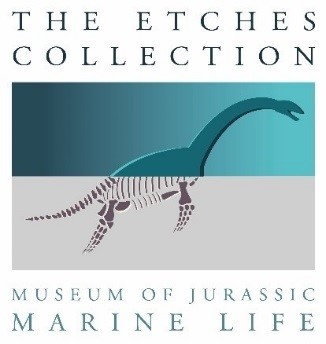Where to hide in the Late Jurassic if you’re a lobster?
/Within the 157-152 million year old Kimmeridge Clay Formation we occasionally find large body chambers of ammonites which have died and fallen to the sea bed to subsequently become temporary (and permanent) homes to other creatures.
In some empty body chambers we find the moulted carapace (shell) of rare fossil lobsters. As lobsters grow they need to shed their shells in order to grow new larger ones (via a process called ecdysis). When they do this their soft bodies are vulnerable to predators until their new shells are formed and hardened. It therefore makes sense that they would use safe places like dead ammonite shells in which to do this.
Many of these large ammonite shells are part encrusted by calcified worm tubes (serpulids) who require a hard surface on which to attach themselves to create colonies ( the Jurassic sea bed at the time was mostly muddy and therefore they could not attach themselves to it).
The Etches Collection Museum is located in Kimmeridge, Dorset on the World Heritage Coast and contains a nationally accredited and designated collection of over 2500 fossils from the Upper Jurassic Kimmeridge Clay Formation. The collection provides a major resource for education and research as well as being a major tourist attraction.
Watch the full story by clicking on the YouTube video link below where this discovery is discussed in more detail.

